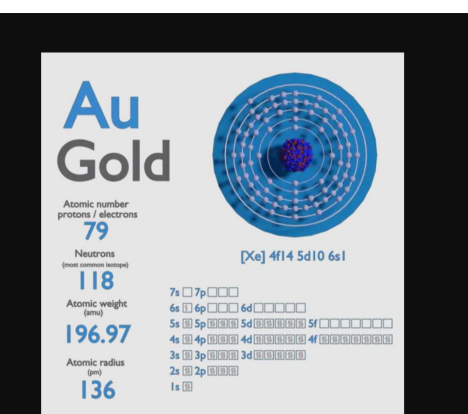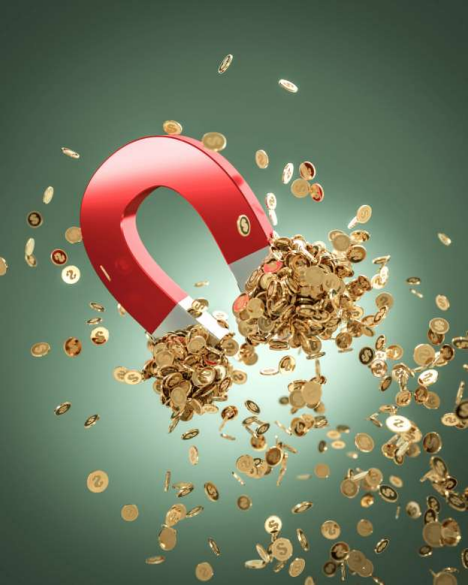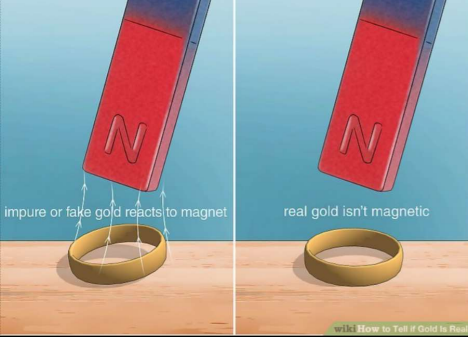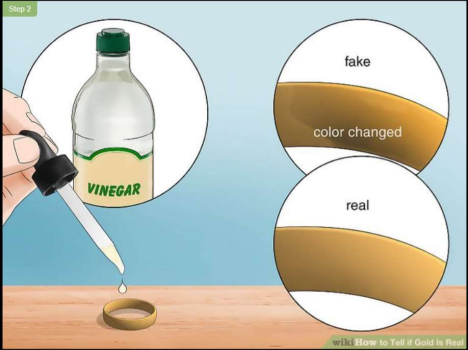Introduction to Magnetic Myths
The Perpetual Puzzle of Precious Metals
Delve into the captivating mysteries that have fascinated treasure seekers and jewelry enthusiasts alike. Gold, a symbol of opulence and grandeur, has long been shrouded in a puzzle: is it magnetic? This enduring question has sparked intrigue and spawned a myriad of tales and theories throughout history.

Setting the Record Straight on Gold's Magnetism
Let's clear the air: real gold is indeed not magnetic. That might be a surprise, especially if you've been part of conversations where folks swear they've seen gold stick to a magnet. However, what is often overlooked is that many gold items are crafted with a blend of metals, known as alloys, which might exhibit some magnetic properties. Pure gold, also known as 24-karat gold, is all about the 'nudge' rather than the 'cling' when it comes to magnets. So, the next time you scrutinize that shiny piece of gold, remember that if it's pure, it won't be making friends with magnets anytime soon.
"The magnetic properties observed in some gold alloys stem from including ferromagnetic elements like iron or nickel. These elements, when alloyed with gold, create a composite material with unique magnetic characteristics." - Dr. Smith, Metallurgist.

The Science of Attraction
Understanding Magnetism in Metals
Before we dive into the specifics of gold's magnetism, let's understand the basics. Magnetism arises from a dance of electrons within an atom's structure. In metals, it's all about whether their electrons prefer to swing solo or pair up. Certain metals, like iron, nickel, cobalt, and some stainless steel, have unpaired electrons, and those free-spirited particles get all spun up by magnetic fields, leading to attraction.
On the other hand, gold has a laid-back atomic structure, with paired electrons that aren't interested in the magnetic hustle. This chilled-out electron arrangement keeps gold from being drawn to your average magnet.
Nevertheless, when certain magnetic metals come into the mix, they can give gold items a magnetic personality they wouldn't have.
"The magnetic properties of metals are primarily determined by the arrangement of electrons within their atomic structure. Ferromagnetic metals like iron, cobalt, and nickel have unpaired electrons that align spontaneously, resulting in a net magnetic moment. In contrast, non-magnetic metals such as gold and aluminum have fully paired electrons, leading to a cancellation of magnetic moments." - Dr. Johnson, Physicist.

Gold's Atomic Structure and Magnetic Properties
Gold's atomic allure lies in its 79 protons housed gracefully within the nucleus, surrounded by a sea of electrons gliding in pairs through their orbits. This electron pairing within gold's atomic structure renders it 'diamagnetic,' pushing it away from the magnetic embrace rather than pulling it closer.
On the perplexing nano-scale, things are different. Gold is broken down into teeny-tiny clusters and exhibits a slight magnetic temperament. This curious case of nano-magnetism hinges on the principles of quantum mechanics, where unpaired electrons in these minuscule clusters can render gold modestly magnetic. The world of atoms and electrons sure has its quirks, demonstrating that even gold isn't all that it appears to be, changing its characteristics as it struts on the microscopic stage.

Common Misconceptions About Gold
Myths vs. Reality: What You Need to Know
Bust those myths open and stay grounded in reality because there's quite a bit of folklore out there when it comes to gold. You may have heard that if gold sticks to a magnet, it must be fake. While this does have a kernel of truth, it could be more complex. Pure gold won't stick, but many genuine gold items are mixed with magnetic metals. Hence, they may show some attraction.
Another tall tale is the notion that heavier items will likely be gold. Heft alone isn't a giveaway— several other metals are heavy, too. If a piece of jewellery or any other item is claimed to be gold but defies what you now know about gold's non-magnetic nature, it might be time to raise an eyebrow. Remember, gold's allure isn't just in its lustre but also in its ability to keep calm around magnets.

The Truth Behind the Magnet Test for Gold
The magnet test, while not foolproof, is a simple and revealing tool. When examining gold, a strong magnet can provide a useful starting point. If there's an attraction between your piece and the magnet, it's a sign that the gold may not be pure. This could indicate gold plating or a lower carat mixture where the gold has been blended with more magnetic metals.
However, it's important to rely on something other than the magnet test. It's not foolproof, as some non-magnetic metals can also mimic gold's lack of attraction to magnets. A comprehensive suite of tests and a professional's discerning eye are recommended to diagnose your gold's authenticity thoroughly. Remember, authenticity in the world of gold is a complex puzzle where the magnet test is just one piece.
Identifying Fake Gold with Magnets? A Closer Look
Magnets can be like the secret agents of your jewellery box—discreet but effective in sniffing out imposters. When you hover a magnet over a piece claiming to be gold, and there's a pull, caution flags should wave. It's a sign that the 'gold' may not be the real McCoy but a clever pretender with magnetic materials.
That said, one must remember that magnets are just the first line of defence, not the complete arsenal. If an alleged gold piece passes the magnetic test, i.e., shows no magnetic attraction, it doesn't automatically earn a badge of authenticity. It could still be copper or lead, with a gold plating lurking in your collection, basking in an unearned golden glow. Bottom line: Magnets can point out the fakes but always use them in tandem with other tests for that full-scale investigation into the true nature of your gold.


Practical Experiments and Tests
Identifying Fake Gold with Magnets? A Closer Look
Let's step into the shoes of a DIY gold tester with some household items and a dash of chemistry. Starting with the vinegar test, grab a bottle from your pantry and place a drop onto your gold piece with an eye dropper. Watch closely—if the spot changes colour, sorry, but your gold might be masquerading as something it's not.
The moving water test relies on gold's high density. Drop your item into a glass of water. True gold will sink swiftly due to its weightiness. If your item takes a leisurely float or slow descent, its purity is likely compromised.
Lastly, the nitric acid test is a little more daunting and chemical. A delicate scratch on the gold, followed by a drop of nitric acid, tells all. Real gold remains stoic, but fake gold? It'll reveal colours you wouldn't want to see on genuine gold. Remember that nitric acid is no joke; safety gear and a well-ventilated space are musts when handling it.
Each test brings its merit to the table, and together, they build a stronger case for the authenticity—or lack thereof—of your golden treasure
Testing Jewelry at Home: Safe Methods
If you fancy a bit of home-based detective work on your jewellery, there are safe methods to test without causing a mad scientist scene. You can start with the hallmark test, searching for marks indicating gold content—often found on clasps or inner bands which reassure you about the carats.
For a noninvasive approach, the ceramic plate test has your back. If your gold piece is authentic, dragging it across unglazed ceramic will show a gold streak. If the streak looks black, it's time to question its authenticity.
When handling precious items, though, it's critical to tread lightly. Stick to tests that won't harm your jewellery or your health. Consider investing in an electronic gold tester that gives you answers without the acid for a more technical route without the risk.
No matter the method, the aim is to respect the integrity of your gold while putting your mind at ease. And if you ever feel in your head, professional appraisers are your go-to for confirming what's glimmering in your collection.

Implications for Treasure Hunters and Jewelry Owners
Panning for Gold with Magnets: Feasible or Fiction
Panning for gold with magnets might sound like a modern-day gold rush fantasy, but it's not as far-fetched as you might think. When you're sifting through the rivers and streams, you're hunting for tiny flakes or nuggets surrounded by loads of other stuff. A strong magnet can come in handy to remove the ferrous materials, like black sands, which often accompany gold, making it easier to spot those shiny specks.
However, don't be misled—magnets aren't a direct route to riches. While they help clean your pan, they won't latch onto gold flakes themselves. Traditional gravity separation methods and a keen eye win the day. Panning with a bit of magnetic assistance can streamline the process, yet nature demands patience and a gentle touch to uncover her golden treasures truly

 Prev Blog
Prev Blog 